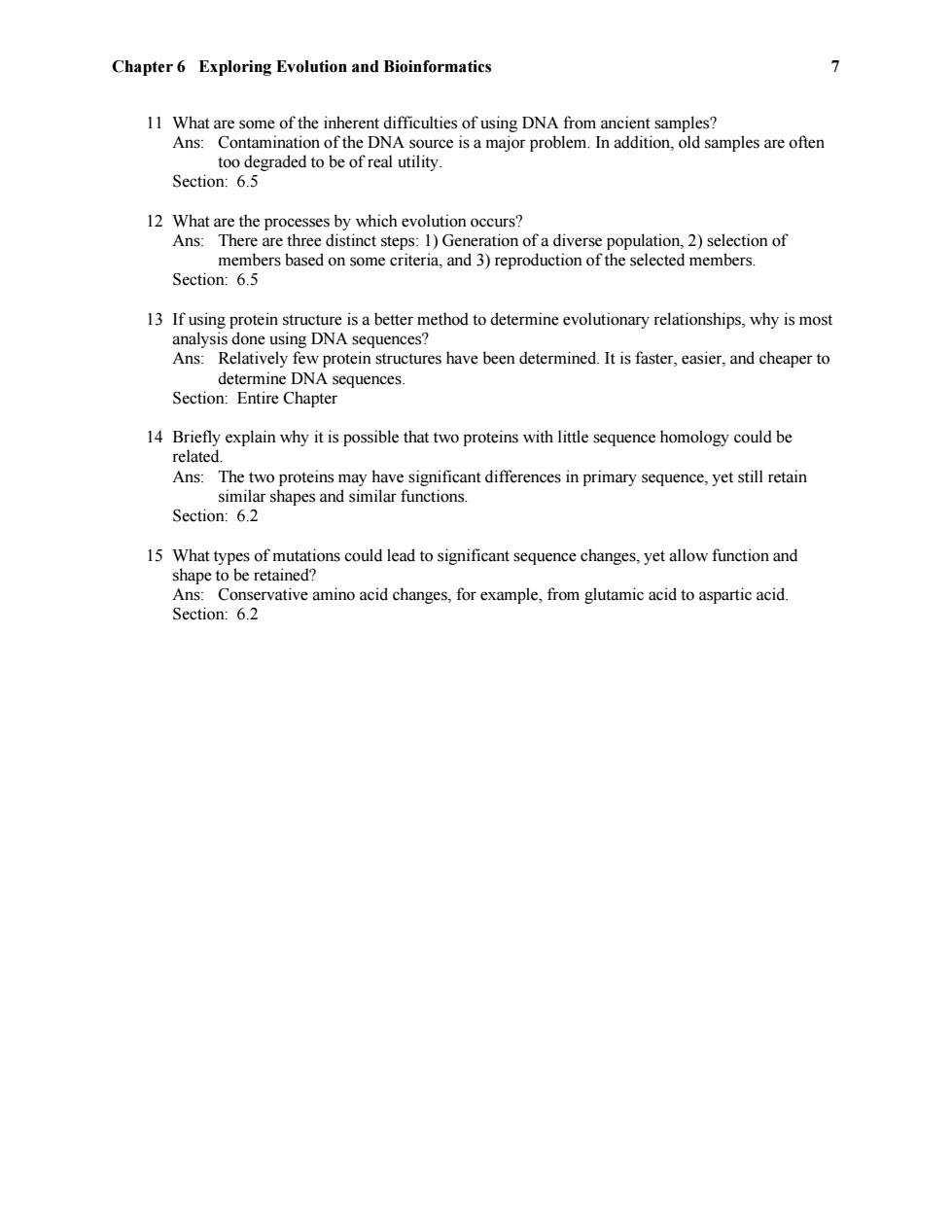正在加载图片...

Chapter 6 Exploring Evolution and Bioinformatics 7 11 What are some of the inherent difficulties of using DNA from ancient samples? Ans:Contamination of the DNA source is a major problem.In addition,old samples are often too degraded to be of real utility. Section:6.5 12 What are the processes by which evolution occurs? Ans:There are three distinct steps:1)Generation of a diverse population,2)selection of members based on some criteria,and 3)reproduction of the selected members. Section:6.5 13 If using protein structure is a better method to determine evolutionary relationships,why is most analysis done using DNA sequences? Ans:Relatively few protein structures have been determined.It is faster,easier,and cheaper to determine DNA sequences. Section:Entire Chapter 14 Briefly explain why it is possible that two proteins with little sequence homology could be related. Ans:The two proteins may have significant differences in primary sequence,yet still retain similar shapes and similar functions. Section:6.2 15 What types of mutations could lead to significant sequence changes,yet allow function and shape to be retained? Ans:Conservative amino acid changes,for example,from glutamic acid to aspartic acid. Section:6.2Chapter 6 Exploring Evolution and Bioinformatics 7 11 What are some of the inherent difficulties of using DNA from ancient samples? Ans: Contamination of the DNA source is a major problem. In addition, old samples are often too degraded to be of real utility. Section: 6.5 12 What are the processes by which evolution occurs? Ans: There are three distinct steps: 1) Generation of a diverse population, 2) selection of members based on some criteria, and 3) reproduction of the selected members. Section: 6.5 13 If using protein structure is a better method to determine evolutionary relationships, why is most analysis done using DNA sequences? Ans: Relatively few protein structures have been determined. It is faster, easier, and cheaper to determine DNA sequences. Section: Entire Chapter 14 Briefly explain why it is possible that two proteins with little sequence homology could be related. Ans: The two proteins may have significant differences in primary sequence, yet still retain similar shapes and similar functions. Section: 6.2 15 What types of mutations could lead to significant sequence changes, yet allow function and shape to be retained? Ans: Conservative amino acid changes, for example, from glutamic acid to aspartic acid. Section: 6.2